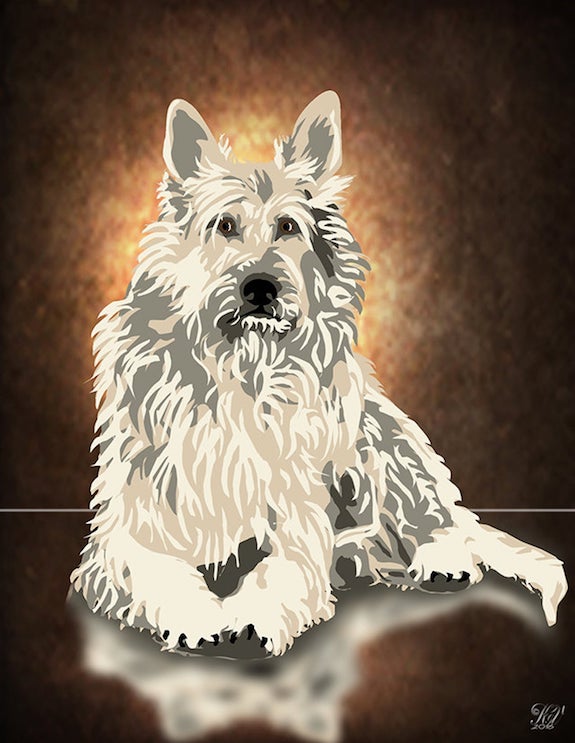
When Berger Picards entered the ring at the first dog show in France in 1863, they took their places among Beaucerons and Briards even though a French veterinarian, Jean Pierre Megnin, had differentiated with accuracy the differences between them. Still, they were judged in a combined class at the historic French Acclimation Society show in Paris, possibly because some fanciers felt the Berger Picard was closely related to other French sheepdogs.
It wasn’t. Neither was it related to the other Belgian herding breeds, i.e., the Malinois and Tervuren. While it took awhile for the Picard to get its own official standard (1922), it took even longer to prove that the breed wasn’t related to Malinoises or Tervs. We had to wait for science to come up with tests that proved everyone wrong.
A 2018 genetic analysis conducted by a team that included Elaine A. Ostrander revealed (to their surprise, btw) that the Berger Picard’s actual “cousins” were five Italian herding breeds and a German breed. The study suggested that a herding dog that was found all over Europe had given rise to the German Shepherd Dog, the Bergamasco Shepherd, the Cane Paratore, the Lupino del Gigante, Pastore d’Oropa, and the Shepherd of Lessinia and Lagorai, and yes, the Berger Picard. The phenotype of these breeds makes the finding a bit startling as they are all so different from each other, but the study points to a common ancestor shared by all of them, possibly through the practice of transhumance, a seasonal movement of livestock aided by dogs.
Image: Pet-tential Berger Picard by DigitalDeviations is available as a print here
